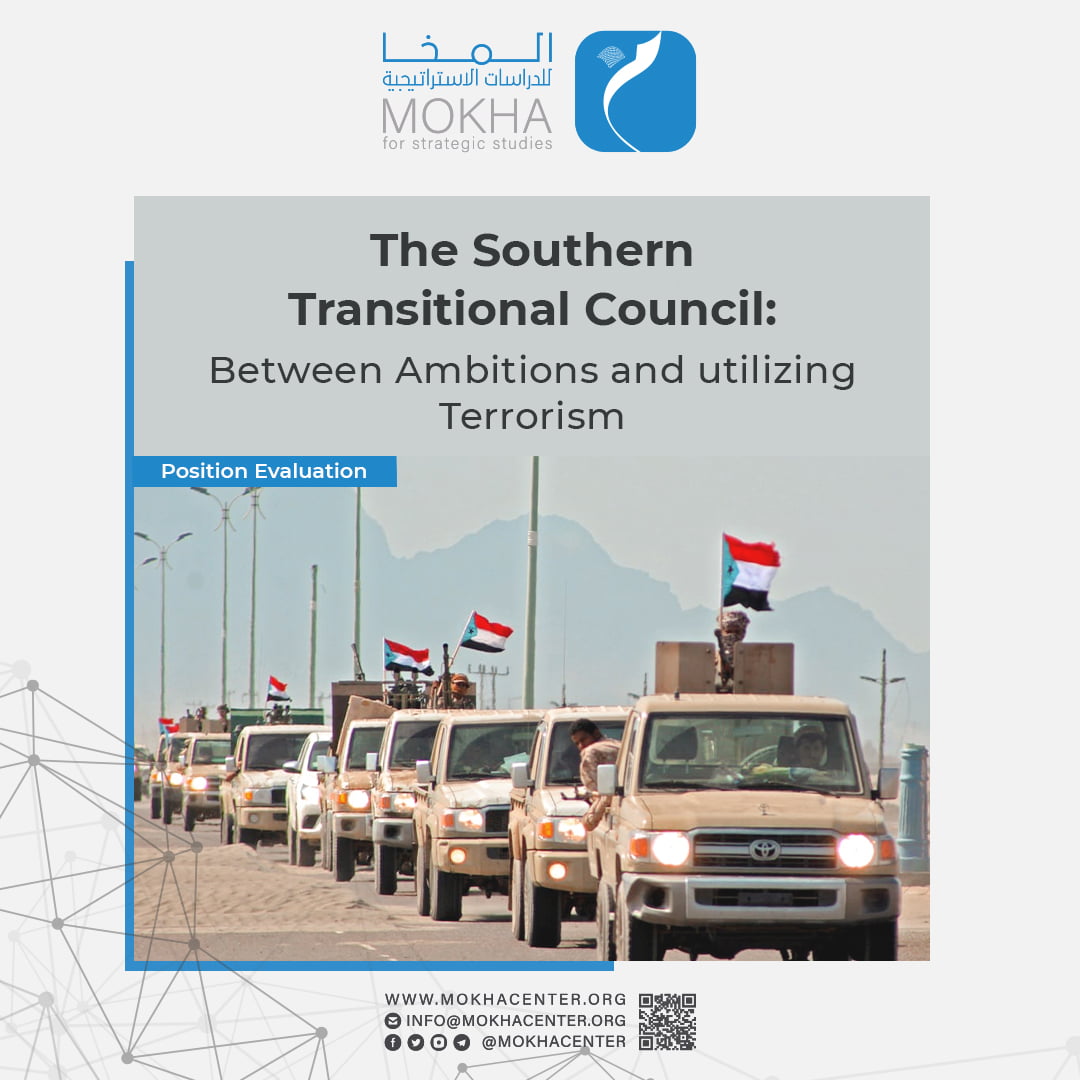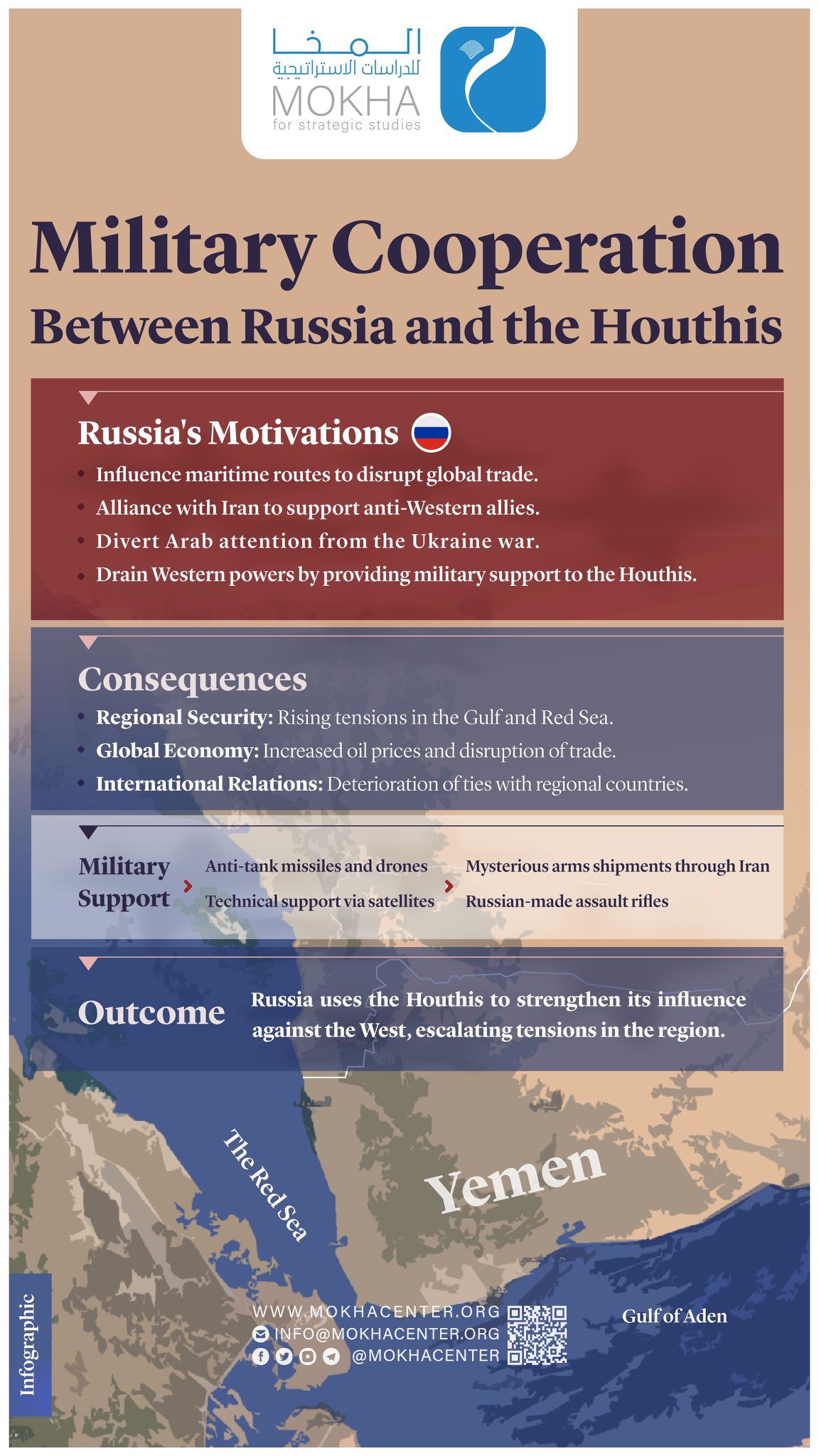The Southern Transitional Council: Between Ambitions and utilizing Terrorism

| Getting your Trinity Audio player ready... |
On the 6th of September, 21 members of the Security Belt of the Southern Transitional Council, affiliated with the UAE, were killed and several were wounded, following an attack claimed by Al-Qaeda(1). Just days before that, on the 3rd of September, Al-Qaeda broadcast a recorded video message, through its media platform, Al-Malahem, during which Akam Sofyol Anam, director of the United Nations Office for Safety and Security in Yemen, appeared with four of his colleagues, who were kidnapped by the organization, as he appealed to the United Nations and the international community to respond to the demands of the organization to save their lives. The UN staff members had been kidnapped on the 11th of February, in Lawdar district, Abyan Governorate, when they were on their way to the city of Aden, after completing what was described as a Field Mission (2).
Last April, Al-Qaeda re-established its spread and movements in the areas of Mudiyah, Al-Wadaa, and Al-Mahfad, in Abyan Governorate, where military vehicles affiliated with the organization were seen moving around these areas for the first time in years. This sudden return of Al-Qaeda, and its emergence in some southern governorates, raises several questions about the reasons behind these changes, its relationship to the agendas practiced by various parties, and the effects and outcomes that the situation in the southern governorates may end up in, considering the use of the “Fight Against terrorism” cover to enable the STC, from these governorates, which is what this paper will attempt to answer.
“Legitimacy” Transferring from the State to the Entities:
For years, the two countries of the Arab Alliance, Saudi Arabia and the UAE, have adopted a policy of empowering the parties loyal to them on the ground, in the southern and eastern governorates, by building their military capabilities and their political and media abilities, as independent entities of the state and rebelling against it at the same time, while giving it legal legitimacy through official agreements where the legitimate government was forced into, such as the Riyadh Agreement, the first and the second.
The two countries relied on three tactics to ensure the freedom and the safe movement of the parties loyal to them. They also used these tactics to strengthen their influence and military dominance on the ground, by engaging in confrontations against the Yemeni army and security forces affiliated with the legitimate government to exclude political forces loyal to the legitimacy from the scene. These tactics are:
– Exploiting the Houthi card and threatening to withdraw the necessary support from the National Army, while preventing it from building a solid military system, and securing logistical supply lines.
– Directing the armed formations of The Security Belts, The Elites and The Giants Brigades, loyal to the UAE, to obstruct the PLC, restructuring the military and security structure in the southern and eastern regions and replacing the former army and security institutions by separatist forces.
– Using the terrorism file to gain international support, especially American support, whether by accusing the opponents of the STC in the southern and eastern governorates of being Al-Qaeda or cooperating with it(3) to justify the confrontations with the national army and security forces as part of the war on terrorism or by letting Al-Qaeda expand to certain areas, as is what happened in Mukalla in 2015, to give justification for the intervention of forces affiliated with Saudi Arabia and the UAE, allowing them to extend their influence on the ground.
Abyan Governorate: Securing Shabwa and the entrance to Hadhramaut
The Abyan Governorate is geographically located between the governorates of Aden and Shabwa, representing a home for some of the brigades loyal to President Hadi. Among the most important of these brigades are the 1st Presidential Guard Brigade, led by Sanad Al-Rahwa, the 5th Infantry Brigade, led by Sanad Al-Maisari, in the Mudiyah region, and the 3rd Presidential Protection Brigade, led by Louay Al-Zamki, which is one of the strongest brigades stationed in the Akad area, in the Lauder district. As most of the members of these brigades are from the governate, the position of these brigades was in favor of the legitimacy, represented by Hadi, rejecting the expansion of the STC in it.
After the removal of Hadi, the formation of the Presidential Leadership Council and the STC taking control of the capital of Shabwa Governorate (Ataq), the military brigades in Abyan Governorate (loyal to President Hadi) had two options: to either submit to the military decision issued by the PLC, which is controlled by Aidarous al-Zubaidi (the head of the military committee of the council) or to oppose and confront them under the banner of rebellion, as it happened with the military and the security forces in Shabwa, or under the banner of terrorism, as it’s happening now. Consequently, the options of these brigades became limited due to the absence of political support.
With UAE support, the STC seeks to include this governorate in its areas of influence, to ensure that Shabwa remains immune to any changes aimed to restore the situation to normal. The STC also paves the way for expansion toward Hadhramaut to complete its dominance over the southern and eastern governorates, as this confirms the necessity of resolving things in Abyan, to ensure the lines of support and supply and to end any resistance sites.
The “Arrows of the East” military operation, which was launched by the STC on the 22nd of August and according to its allegations, the operation aimed to purge the Abyan Governorate from what it describes as terrorist groups, without authorization from the legitimate government institutions, to consolidate its control over Abyan Governorate.
According to a statement issued by the STC forces, “the military operation aims to protect the roads linking the southern governorates and to stop the smuggling of weapons and contraband across the coastal strip of Abyan Governorate.”
It also aims to secure the movement of southern forces between Aden, Shabwa, Hadhramaut and Al-Mahra and to remove the risk of supporting and strengthening any rebellions or possible terrorist operations in the southern governorates, especially Shabwa and Hadhramaut.
The head of the General Department of Foreign Affairs of the STC, Muhammad Al-Ghaithi, said, through his account on Twitter: “The efforts of our forces to fight terrorism require our partners, at the regional and international levels, to double their support, as terrorist groups, represent a real threat to the interests and future of all (4).” This is a discourse that “flatters” the West to enable the STC to impose its control in the south under the pretext of the war on terror.
Despite the STC’s control of the capitals of Shabwa and Abyan, the entry of its military formations from the regions of Al-Dhalea and Yafa, which are the historical competitors of the regions of Abyan and Shabwa, may provoke the people of Shabwa and Abyan, and push them toward confrontations, due to historical, political and social considerations.
Multiple Utilization of Al-Qaeda:
The file of terrorism in Yemen has become a tool used by parties against others, because of conflicts between internal and external parties, in an attempt to gain international support and to legitimize the crimes and violations committed by them, as the policies of the western countries in the Arab region focus more on the issue of fighting terrorism, at the expense of the issues and concerns of the peoples of the region and the necessities to change and reform the existing authorities. These are policies that have prompted Western countries to remain silent and turn a blind eye to the crimes of the ruling regimes or groups that raise the banner fighting terrorism, while they are known for practicing the worst forms of violations against their opponents, including:
- The Houthis
The former president, Saleh, was the first to utilize this file, then the Houthis came to follow the same policy under the banner of fighting terrorism and terrorist organizations, such as Al-Qaeda, allowing them to carry out operations aimed at eliminating their opponents and extending control.
On more than one occasion, the Houthis’ leader, Abdul-Malik al-Houthi(5), announced they would confront the Al-Qaeda organization. This made Washington instruct the Central Intelligence Agency (CIA) in Sana’a to intensify its cooperation with the Houthis, despite their rebellion against the state and their seizure of the capital, Sana’a, in 2014. Washington’s interest remained limited to fighting terrorism regardless of the collapse of the Yemeni state’s political, security, and military systems.
The legitimate government presented security evidence that condemned the Houthis’ use of Al-Qaeda against their opponents. Among this evidence is the provision of a haven for its movements in Al-Bayda Governorate and the release of prisoners affiliated with Al-Qaeda from intelligence prisons in Sana’a. The Yemeni foreign minister, Ahmed Awad bin Mubarak, had spoken about the existence of several reports of the Yemeni government, showing the extent of cooperation and coordination between the Houthis and terrorist organizations, such as Al-Qaeda and ISIS through assassinations and kidnappings, and other terrorist acts(6).
- The Southern Transitional Council:
The STC in the southern and eastern governorates follows the policy of the Houthis, by accusing its opponents of terrorism and presenting itself as a trusted ally of the West in the war on terror, justifying armed confrontations against their opponent; where media affiliated with the STC accused leaders in the security services and the military, of cooperating or being members of Al-Qaeda.
In the speech of the president of the STC, Aidarous al-Zubaidi, at the opening of the fourth session of what is described as the National Association in the city of Aden, he said, “Our battle with terrorism is an existential battle since the existence of the invaders who promote terrorism and extremism in the southern lands since 1994, based on their ideology which aimed to turn these lands into an alternative home for terrorist organizations, to break the will of the people of the south and to threaten international peace and security.” He added, “These terrorist groups spread corruption by practicing ideological intimidation, changing educational curricula, creating extremist hotbeds and carrying out assassinations, bombings, and mass killings.” He stressed the importance of “moving forward in the fight against terrorist and extremist groups, to secure and protect the southern regions, despite the limited capabilities and individual efforts.”(7)
In another context, the president of the STC, Aidarous al-Zubaidi, attempted to present the STC as a representative of the PLC in the fight against terrorism, calling on the U.S. administration to support the security forces, particularly the Anti-Terrorism Forces and Coast Guard Forces, to play their role and accomplish their tasks in this aspect.
The U.S. ambassador to Yemen, Steve Fagin, expressed his country’s commitment to supporting the PLC and the joint government (Legitimate and Transitional) and its willingness to provide support to the security forces, primarily the Anti-Terror Forces and the Coast Guard to carry out their tasks in the fight against terrorism committed by Al-Qaeda and ISIS.(8)
The Future of the Southern and Eastern Provinces:
Based on the previous facts, the policies followed by regional, international and local parties, the weakness of the PLC, the efforts of the STC to seize the authority of the southern governorates and its exploitation of the war on terror file to eliminate its opponents and their political forces, the future of the southern and eastern governorates is heading toward one of the following scenarios:
- The First Scenario: The Southern Transitional Forces and The Giants Brigades heading toward the eastern governorates:
This scenario suggests that the forces of the STC and the Giants Brigades, loyal to the UAE, will head toward the Hadhramaut and Al-Mahra governorates, where Aidarous Al-Zubaidi’s controls the military decisions of the PLC, to impose their control over the two governorates and to break down the forces of the first and second military regions, either with the same tactic that was used in Shabwa Governorate (the dismissals of military and security leaders) or under the same cover that was used in Abyan (fighting terrorism).
It seems that this scenario is the closest to occur, given the following:
- Saudi Arabia’s permissive position toward PLC, as Riyadh’s desire to strike the tribal forces that reject the Saudi presence in Mahra.
- Abu Dhabi intensifies its efforts to empower its allies in the eastern governorates, through logistical support and turn the Saudi position in their favor.
- The absence of coordination and cooperation between the parties opposed to secession, including those in the PLC.
- Weakness and dispersion of the southern forces rejecting the policies of the UAE and the PLC. This scenario depends on the American and British positions on the issue of terrorism and their view on how to deal with this file.
- The Second Scenario: A Military Halt and a Transition to Political Arrangements:
This scenario comes from the theory that Riyadh and Abu Dhabi will stop military operations in the southern and eastern governorates, supporting the PLC to manage the transitional phase and installing security in the areas under the PLC to avoid further chaos. Even though it’s a weak scenario; it remains a possibility.
- The Third Scenario: The Failure of the Southern Transitional Council:
This scenario sees the PLC’s administration of the areas under its control, especially Aden, Abyan and Shabwa, paving the way for a massive popular explosion in these governorates, starting an armed resistance against the STC, where the people of the province will be demanding to regain the control of the affairs of their regions. The STC leadership is aware of this and began to arrange various alliances, but they remain fragile. Due to the monopoly of power, the absence of a unified state, and the exclusion and marginalization of the incoming forces, the southern governorates will be home to multi-front conflicts, obstructing and complicating the process of peace and stability in the region.
References
Marib Press, on 6/9/2022, at the following link: https://marebpress.net/news_details.php?sid=186939
The Independent Arabia, on 4/9/2022, at the following link: https://shortest.link/3Z2e
Recently, STC-affiliated media accused the Islah Party of selling weapons to Al-Qaeda in areas in the Al-Wadaya and Mudiyah districts in Abyan.
It added that the STC forces had obtained evidence revealing the party’s involvement in selling the army’s weapons (formerly) to the organization.
It also pointed out that there is a close relationship between Al-Islah Party and Al-Qaeda. Al-Sabah News, at the following link: https://shortest.link/3YNP
Al-Arab website, on 23/8/2022, at the following link: https://shortest.link/3Zwd Al-Araby Al-Jadeed, on 29/1/2015, at the following link: https://shortest.link/3ZuH
The Independent Arabia, on 4/9/2022 AD, at the following link: https://shortest.link/3Z2e
Alsharaea newspaper, 16/6/2021 AD, at the following link: https://alsharaeanews.com/2021/06/16/35697/
The official website of the Transitional Council, on 5/7/2022, at the following link: https://stcaden.com/news/17875



